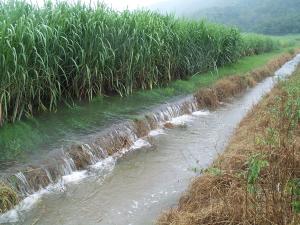327. Heterogeneity of farmers
Farmers are highly heterogeneous. Even farmers growing the same crops in the same region are highly variable. This is often not well recognised by policy makers, researchers or extension agents.
The variation between farmers occurs on many dimensions. A random sample of farmers will have quite different soils, rainfall, machinery, access to water for irrigation, wealth, access to credit, farm area, social networks, intelligence, education, skills, family size, non-family labour, history of farm management choices, preferences for various outcomes, and so on, and so on. There is variation amongst the farmers themselves (after all, they are human), their farms, and the farming context.
This variation has consequences. For example, it means that different farmers given the same information, the same technology choices, or facing the same government policy, can easily respond quite differently, and they often do.
Discussions about farmers often seem to be based on an assumption that farmers are a fairly uniform group, with similar attitudes, similar costs and similar profits from the same practices. For example, it is common to read discussions of costs and benefits of adopting a new farming practice, as if the costs and the benefits are the same across all farmers. In my view, understanding the heterogeneity of farm economics is just as important as understanding the average.
Understanding the heterogeneity helps you have realistic expectations about how many farmers are likely to respond in particular ways to information, technologies or policies. Or about how the cost of a policy program would vary depending on the target outcomes of the program.
 We explore some of these issues in a paper recently published in Agricultural Systems (Van Grieken et al. 2019). It looks at the heterogeneity of 400 sugarcane farmers in an area of the wet tropics in Queensland (the Tully–Murray catchment). These farms are a focus of policy because nutrients and sediment sourced from them are likely to be affecting the Great Barrier Reef. “Within the vicinity of the Tully-Murray flood plume there are 37 coral reefs and 13 seagrass meadows”.
We explore some of these issues in a paper recently published in Agricultural Systems (Van Grieken et al. 2019). It looks at the heterogeneity of 400 sugarcane farmers in an area of the wet tropics in Queensland (the Tully–Murray catchment). These farms are a focus of policy because nutrients and sediment sourced from them are likely to be affecting the Great Barrier Reef. “Within the vicinity of the Tully-Murray flood plume there are 37 coral reefs and 13 seagrass meadows”.
Our findings include the following.
- Different farmers are likely to respond differently to incentive payments provided by government to encourage uptake of practices that would reduce losses of nutrients and sediment.
- Specific information about this can help governments target their policy to particular farmers, and result in the program being more cost-effective.
- As the target level of pollution abatement increases, the cost of achieving that target would not increase linearly. Rather, the cost would increase exponentially, reflecting that a minority of farmers have particularly high costs of abatement. This is actually the result that economists would generally expect (see PD182).
Further reading
Van Grieken, M., Webster, A., Whitten, S., Poggio, M., Roebeling, P., Bohnet, I. and Pannell, D. (2019). Adoption of agricultural management for Great Barrier Reef water quality improvement in heterogeneous farming communities, Agricultural Systems 170, 1-8. Journal web page * IDEAS page
Twas indeed an interesting read on the heterogeneity of farmers. Quite valid in a country like Australia with handful of cane growers and millers. I was wondering how this principle of farmer(s) specific policy would work in a country like India with over six million cane growers. Anyhow, its a good issue to ponder about even in India with varied agro-climatic zones.
Thanks. Heterogeneity within a local population of farmers would also be high in India, probably even higher than in Australia given the greater diversity of farm scales and farmer wealth.